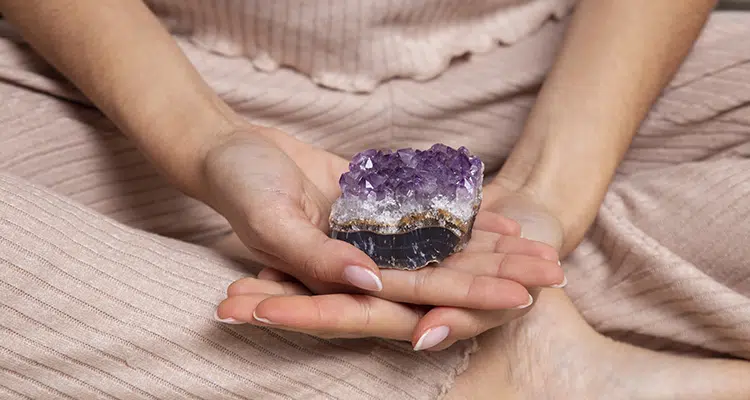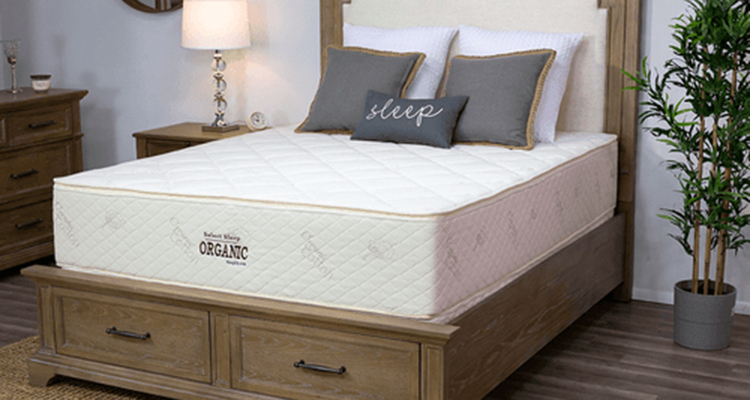What Is Sleep Restriction Therapy?
Research shows that increasingly numbers of people are struggling to get to sleep and to stay asleep throughout the night. Unfortunately, lack of sleep can have a significant negative impact on us. We all know how difficult it can be to function after a night of restless sleep!
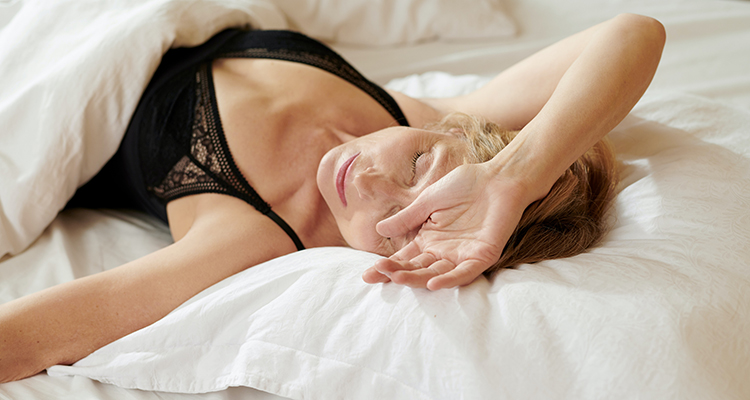
Content
Sleep basics
Before we can understand how sleep restriction therapy works, we need to take a look at the basics of sleep and insomnia. To start with, it’s vital to understand that although we’re resting when we’re asleep, our mind is actually very busy. When we’re sleeping, our mind performs vital functions which help us to maintain our physical and mental health, as well as helping us to function properly during the day.

The circadian rhythm
Our circadian rhythm is like our internal body clock. It uses external environmental cues, such as sunlight and darkness, to determine when we should be asleep and when we should be awake. The circadian rhythm releases a hormone called melatonin as we move towards bedtime. The levels of this hormone build up and start to make us feel tired. As we sleep throughout the night, levels of melatonin reduce to prepare us for waking up in the morning.
Combined with another process called sleep-wake homeostasis, the circadian rhythm prepares our body and mind for sleep at bedtime, and helps us to feel awake during the day when we’re trying to function. When we have sleep issues, the circadian rhythm can often become ‘confused’ and out of balance, which perpetuates the existing sleep issues.
Sleep cycles
When we’re asleep, our brain moves through different stages of sleep in sequence. This happens repeatedly throughout the night. Each time it moves through all of these stages, it completes a sleep cycle. We go through multiple sleep cycles each night, depending on how long we sleep. Each cycle lasts around 90 minutes.

We’ll then move back up through some of the lighter stages of NREM sleep and finish the cycle in REM sleep. REM sleep is a much lighter sleep. It’s when we do most of our dreaming. REM sleep named for the rapid eye movements we make while our eyes are closed during this stage of sleep. Each stage of sleep has a vital function, so it’s important we are able to move through our sleep cycles completely and experience all of these stages. When our sleep is disturbed, our sleep cycles are disturbed and the brain can’t complete all of the important jobs it needs to carry out.
What is insomnia?
Insomnia is the most common sleep disorder, with as many as 40% of adults struggling with insomnia. The disorder can cause problems with falling asleep when we first go to bed, which is known as onset insomnia. It can also cause issues staying asleep, meaning we wake up frequently throughout the night and find it very difficult to get back to sleep: this is called maintenance insomnia. An individual can struggle with both onset and maintenance insomnia.

What happens if we don’t get enough sleep?
We’ve mentioned that sleep disturbance can cause a range of problems, so let’s take a look at what exactly those problems are. Lack of sleep can cause a number of cognitive difficulties, including problems focusing, issues with memory, problems making decisions, and difficulty learning new things. These issues can make it very difficult to function during the day. They can affect our performance at work or school, and can be tough to live with.
Disturbed sleep also affects how we regulate our emotions. This can cause us to feel short tempered and irritable, and to potentially act out of character. It can also contribute to mental illness, low mood, and reduced confidence. Lack of sleep can also affect your sex drive, which can lead to issues within relationships.
Of course, when we don’t get the sleep we need, we feel extremely tired. This fatigue on it’s own can be hard to function through. Sometimes people are so tired that parts of their brain actually fall asleep for a few seconds! This is called a microsleep. It can happen at any time and the person will feel as though they are awake but perhaps ‘zoned out’. Understandably, this can be very dangerous.
Long term sleep loss can increase our risk of physical health issues, such as weight gain, diabetes, heart problems, kidney disease, stroke, high blood pressure, and a reduced immune system. If our immune system is reduced, it makes us more susceptible to infections. Overall, ongoing sleep loss can seriously impact your quality of life.
What is sleep restriction therapy?
Now we understand the basics of sleep, we can take a look at what sleep restriction therapy actually is. Sleep restriction is a very effective method, often used as part of cognitive behavioural therapy for insomnia (CBT-i), to help patients get the sleep they need. The results are long lasting and medication free. This article from Sleep Station explains that sleep restriction therapy is, “one of the most effective non-pharmacological techniques to improve sleep over time”.

The term sleep restriction can sound scary, but don’t worry the therapy isn’t aiming to reduce the amount of time you’re actually sleeping. In fact, quite the opposite is true. The idea is to restrict the amount of time you’re actually in bed. At first you will only spend the amount of hours you would usually be actively sleeping. You won’t get any more time in bed, even if you haven’t slept well.
You will, of course, be very tired for the first few days. This can sound counterproductive, but the idea is to reset your body clock so that you end up sleeping for the entire time you are in bed. The tiredness is actually key to the process. If you aren’t spending much time in bed, your sleep drive increases. This means you’re more likely to sleep when you’re in bed the next night.
Once you are sleeping throughout, the time limit will be gradually increased. Over time, you will build up your time in bed until it matches the required amount of sleep for your age bracket. This process can improve your sleep quality and allow you to start sleeping throughout the night. This study on the topic states: “Limiting the time spent in bed leads to more efficient sleep that is both consolidated and more regular and predictable.”
The theory of sleep restriction
Sleep restriction is based around the idea that when someone is lying in bed unable to sleep for a long period of time, they begin to feel very negative. We’ve all been there. When we’re awake at night and know that we need to sleep, we feel our stress levels rising and becoming increasingly tense. We might start to look at the clock and think, ‘I’m only going to get a couple of hours of sleep now’ or ‘I’m going to be exhausted in the morning’.

We tend to start feeling very isolated, feeling as though the rest of the world is fast asleep and we’re the only ones stuck awake. We often find that we’re in a very negative mindset, for example thinking things like ‘I’m never going to be able to get to sleep’ or ‘I’m going to have these sleep problems forever’. We might toss and turn, feeling increasingly restless and frustrated with ourselves.
To be able to sleep, we need to be relaxed. When we are stressed and worried, both our body and mind tenses up. Unfortunately, the more tense and stressed we get, the less likely we’re going to be able to get to sleep. If we have ongoing sleep issues, these worries can even start to make us worried about going to bed at night, because we ‘know’ we’re not going to be able sleep.
Often these negative sleep beliefs perpetuate themselves because we’re so stressed and unable to sleep. This reinforces to our mind that ‘we were right’ and we can’t sleep. When we lack sleep, it’s common to convince ourselves we need to try and stay in bed longer to ‘catch up on sleep’. It’s also more likely that we’ll turn to poor sleep hygiene habits, such as napping during the day. This is a vicious cycle, but it can be broken and sleep restriction is one powerful way to do that.
By reducing the amount of time we’re in bed at night, we at first become more tired and this is likely to make us fall asleep sooner the next night. We’re also more likely to sleep throughout the night. This actively challenges those negative beliefs and helps us to realise that we can sleep. Over time as we begin to consistently sleep more restfully, our negative mindset is shifted and worries around bedtime are reduced. In time, we’ll look forward to going to bed and associate it with a peaceful, calming sleep.
How sleep restriction works
Now that we understand sleep restriction, we can take a look at the steps involved to actually put the therapy into practice. It’s important to note that this is best done under guidance as part of therapy. This is because many factors will be taken into account during sleep restriction therapy, such as your age, your activity level, any medical conditions, medication you are on, and your lifestyle. This section is simply designed to help you understand how sleep restriction actually works and what to expect.

Keeping a sleep diary
The first step is to keep a sleep diary. This allows you to keep track of your sleep habits, including how much you are typically sleeping each night. You need to know this basic information so you can determine your starting time limit for your sleep restriction therapy. It also allows you to see patterns in your sleep and identify any potential triggers for sleeplessness, all of which can help you later on in tackling insomnia.
You should note down information such as:
- What time you went to bed and what time you woke up
- How many hours of sleep you got during the night (don’t worry, this can be an estimate)
- If you woke up during the night and how many times
- Any reasons for your lack of sleep that you noticed
- How you were feeling when you were in bed
- How active you were during the day
- What you ate and drank before bed
- Whether you took any naps during the day (if so note down how many and for how long)
- Any medications or other substances you consumed
- Any health conditions and how they affect your sleep
You can note down this information in a notepad, on your phone, on a sleep app, or you can find sleep diary templates online to download. Be consistent in keeping track of this information every night, at least for a couple of weeks so you can get a good idea of your sleep patterns.
Determining your time limit
Once you have an idea of how much you sleep each night on average, you can set your starting limit for how long you are allowed to spend in bed each night. For example, if you go to bed at 10pm at night and wake up at 8am, but only sleep for around six hours of that time, then you would set your time limit to six hours. It doesn’t matter if your sleep is usually broken: count up the total amount of hours you are usually asleep and set this as your limit.

Setting a wake time and bedtime
Once you’ve figured out how long you’re allowed to stay in bed, it’s time to pick a time that you are going to go to bed and get up each night and morning. You need to stick to these times for the therapy to work optimally, so pick a time that is realistic for you and which fits in with your daily routine.
It’s a good idea to choose your ‘wake time’ first, to fit in with your daily schedule. Once you’ve figured that out, you can count backwards to figure out when you need to go to bed. For example, if you need to get up at 7am in order to get to work and your time limit in bed is 6 hours, you’d need to go to bed at 1am. Make sure you don’t get into bed before your bedtime, even if you feel tired and think you could go to sleep. Stay awake and stick to the time limit set for you.
Consistency is key
Engaging in sleep restriction therapy is a drastic change. During the first week or more, you’re going to feel very tired. This will be difficult. However, it’s really important that you stick with it, even when things get tough, as this is how you are going to get long lasting results. Consistency truly is key with this type of therapy.
If you find yourself really struggling, remind yourself of why you are doing the therapy and of the positive outcomes that lie ahead. Think about long time relief from sleep issues and the benefits you’ll gain from being able to sleep restfully going forward. If you have to drive or operate machinery for work, it might be worth talking to your workplace to let them know you’ll be more tired than usual. It’s important you keep yourself and others safe if you are struggling with severe daytime fatigue. You could even consider taking some time off if possible. This can seem like a big commitment, but it will be worth it in the long term.
You should also have support available to you to help to keep you on track and help you to keep progressing. You can get support from your therapy provider, but you could also seek support from loved ones. Explain what you’re going through and what you’re trying to achieve. Help them to understand how positive this will be for you in the long term. They may be there for emotional support and encouragement. They might also be able to help with practical tasks during the day when you’re feeling particularly tired, to make things easier for you.
While you’re going through sleep therapy, it’s important to keep going with your sleep diary. In particular, take note of how many hours you are sleeping during your time limit in bed. This is vital to track your progression and determine when you’re ready to move onto the next stage of the therapy.
Practicing good sleep hygiene
While you’re engaging in sleep therapy, and going forward, it’s really important you practice good sleep hygiene. Sleep hygiene refers to positive behaviours you implement which encourage restful sleep. Positive sleep hygiene habits include:
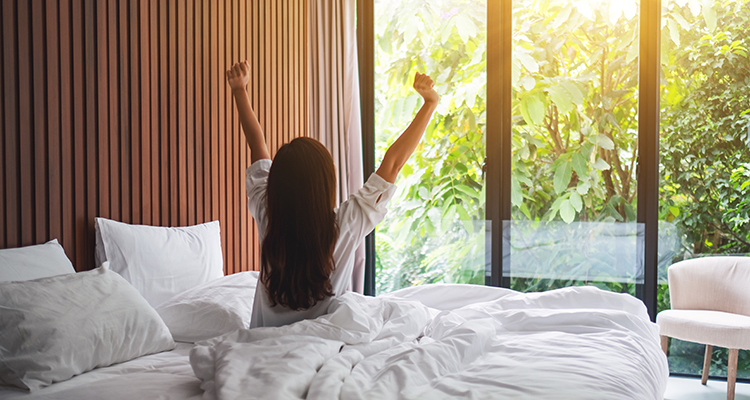
- Having a consistent sleep scheduleThis is part of sleep restriction therapy but you should continue to keep a regular bedtime and wake time as much as possible even after therapy ends.
- Wind down for bedYou should set aside around 20 to 30 minutes each night before you go to bed to relax. This helps to get you ready for sleep and leaves any stress from the day behind you. You should put away electronics and avoid stressful conversations during this time. Try to do something relaxing, such as taking a warm bath, reading a book, or listening to calming music.
- Keeping your bedroom for relaxation, sex, and sleep only.Avoid stimulating or stressful activities in the bedroom, such as working or watching TV. This helps to make the brain to make the connection between the bedroom and sleep.
- Making your bedroom comfortableComfort is important for restful sleep. You should ensure you have a comfortable, supportive bed and mattress. You could also add more pillows and blankets to increase your comfort level. It’s important you maintain the temperature within your bedroom, around 65 degrees fahrenheit is optimal. If you’re too hot or too cold, it can disturb your sleep.
- Keep your bedroom darkKeeping the bedroom dark helps to regulate your circadian rhythm. Ideally, you should use dimmed lighting in the bedroom when you’re awake. When you’re going to sleep, you could use blackout curtains or an eye mask to make it as dark as possible.
- Reduce noiseExternal noise can startle us out of sleep, so it’s important you reduce the noise in your environment as much as possible. Practical, simple ideas to do this include wearing ear plugs and asking others in the home to keep the noise down once you’re in bed. You could also use a white noise machine: the steady, constant low noise can help to mask other harsher sounds in the environment.
- Reduce or eliminate napsWhen you’re actively engaging in sleep restriction therapy, it’s really important that you do not nap at all during the day. This is vital to how the therapy works. Once the therapy is over and you are sleeping well, you could choose to have a short nap now and then, but try to keep these to a minimum so they don’t disturb your sleep at night.
- Watch what you eat and drinkGoing to bed too full or hungry can disturb your sleep. You should ensure you don’t eat heavy meals close to bedtime. Instead, you could have a light snack if you find you’re regularly hungry in bed. It’s also important you cut out stimulants near bedtime as these can keep you awake: this includes nicotine and caffeine. Ideally, alcohol near bedtime should also be avoided where possible.
- Exercise during the dayGetting active during the day helps to tire your body and mind out in a healthy way, enabling you to sleep more restfully. While you’re actively engaging in sleep restriction therapy, it’s important to stay active but you may want to reduce your exercise initially so that you don’t overdo things. Once you’re sleeping well, you can increase your activity levels again.
- Getting out in natural lightBeing out in natural light as much as possible during the day helps to regulate your body clock and helps you to get the sleep you need at night.
Increasing your time limit
Every week, your time limit in bed should be reviewed. If you are sleeping for 80% to 85% or more of the time you’re in bed, then the time limit will be increased by between 15 and 30 minutes. You’ll hear this referred to as sleep efficiency, which simply means the amount of time you’re sleeping in relation to how long you’re in bed. If you are not sleeping for the majority of the time you’re in bed, the time limit will stay the same for that week.
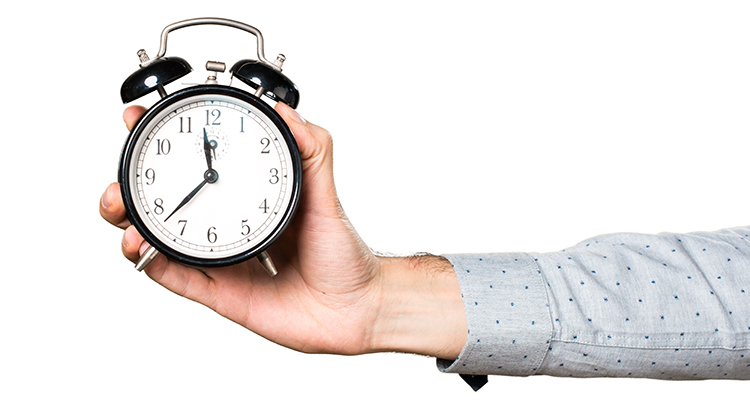
Relapse prevention
Relapse prevention is the last, yet absolutely vital stage of the therapy. This stage goes over everything you’ve learnt and ensures that you feel ready to move forward, equipped with the tools you need to tackle any setbacks in the future. This stage will ensure that you maintain good sleep hygiene habits going forward and that you understand the importance of doing so.
You’ll also be taught that if you do have a few sleepless nights, you should not panic or revert back to unhealthy coping strategies. Instead, you should keep up with sleep hygiene and utilize the techniques you’ve learnt to help get things back on track. You can use sleep restriction in the future for a short period, if you find yourself struggling. This should help you get things back on an even keel. The aim is to prevent you from slipping back into ongoing insomnia.
The benefits of sleep restriction therapy
The first and most obvious benefit of sleep restriction therapy, is that it’s proven to help people tackle insomnia and get a more restful sleep. Sleep restriction can be adjusted to help a wide range of people, including those from a variety of age brackets and with different medical needs. Sleep restriction is also easily accessible for everyone.

The therapy is a great option in place of sleep medication and is much more sustainable. In fact, sleep restriction is proven to have long term, lasting effects. This article states: “brain scans of some insomnia sufferers who have undergone sleep restriction therapy show brain activity that is closer to that of good sleepers while in deep sleep, suggesting that the longevity of the improved sleep effects may be down to some physiological changes.”
Sleep restriction has been shown to change negative attitudes towards sleep, therefore reducing anxiety and worry around bedtime. Instead, people leave sleep restriction therapy with a much more positive view. You might even start looking forward to bedtime!
Aside from the benefits we’ve mentioned, you’ll also gain all the benefits of having a consistent, restful sleep. Benefits include:
- Increased energy
- Improved alertness and concentration
- Improved memory
- Improved ability to learn
- Ability to make positive decisions
- Better productivity
- More stable mood and enhanced emotional wellbeing
- A stronger immune system
- Reduced risk of physical health issues including weight gain, diabetes, heart disease, stroke, etc
- Reduced stress levels
- Maintaining a healthy sex drive
- Improved relationships and social interaction
- A better quality of life!
Where to access sleep restriction therapy
Now we know all about sleep restriction therapy, you might be wondering where you can actually access it! As we mentioned earlier, sleep restriction is often part of CBT-i, however it can also be used as a stand alone therapy. There a few ways you can access sleep restriction therapy:

- Through your doctorYou may be able to access sleep restriction through a referral from your doctor. When you go to speak to them, it’s a good idea to take your sleep diary with you to give them a clearer idea of what you’re going through. Explain your symptoms and speak up about what you feel would help. If you feel sleep restriction is for you and you’ve done your research, don’t be afraid to say that and to advocate for the treatment you feel is right for you.
- Self-referralDepending on where you live, you might be able to self-refer for psychological therapies such as CBT-i. You could ask your doctor or have a look online to see what’s available near you, and how to start the process.
- PrivatelySeeking face to face treatment privately is an option, but it’s important to remember that this can be very costly. If you do choose to find a private therapy, take your time to do your research and make sure they’re appropriately qualified. It’s also a good idea to ask them plenty of questions before committing to therapy with them, such as what their experience is dealing with sleep issues and using sleep restriction.
- OnlineAn online sleep therapy programme can provide you with a range of natural treatments for insomnia, including sleep restriction. This is often a more affordable option and is more readily available. The benefits also include allowing you to access therapy when you want it, without having to wait. You can carry out sessions in your own home, according to your own schedule.
When you’re making a choice about how you want to access therapy, it’s important you take into account what’s really going to be best for you. You need an option that is available in your area and that fits in with your budget. It’s also important to take your preferences into account. Some people prefer to be face to face for therapy, whereas for others online therapy can be beneficial. Remember that you are the patient and this is about you. Finally, remember that even though sleep issues can be incredibly frustrating, there is hope and you can start to sleep peacefully again!
References
Dr. Raminder Mulla, (2019), “Spend less time in bed and sleep better”. Sleep Station.
Jasvinder Chawla, MD, (2018), “What is sleep-restriction therapy for insomnia?” Medscape.
Kaiser Permanente, (2020), “Sleep Restriction Therapy”.
Eric Suni, (2020), “Sleep Hygiene”. The National Sleep Foundation.
Brandon Peters, MD, (2020), “Sleep Restriction and Behavioral Therapy for Insomnia”. Very Well Health.











